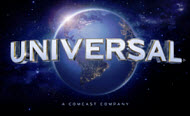An American Tail: The Treasure of Manhattan Island
Reviewed by: Brett Willis
CONTRIBUTOR
| Moral Rating: | Better Than Average |
| Moviemaking Quality: |
|
| Primary Audience: | 8 to Adult |
| Genre: | Animation |
| Length: | 1 hr. 18 min. |
| Year of Release: | 1998 |
| USA Release: |
February 15, 2000 November 16, 1998 (UK) |

| Featuring |
|---|
| voices of Thomas Dekker, Dom DeLuise, Pat Musick, Nehemiah Persoff, Erica Yohn, Lacey Chabert, Elaine Bilstad |
| Director |
|
Larry Latham |
| Producer |
| Larry Latham |
| Distributor |
After a break of several years, Fievel Mousekewitz and the rest of the American Tail gang are back on screen (or rather, direct-to-video). A mostly new crew is in charge of production. Sorry to say that the quality of the screenwriting, the songs, and the animation have all dropped off a bit. And there’s more violence and questionable content here than in the original.
The Mousekewitz family, still in 19th-century New York City, is trying to build a future and make good on the American Dream. But life isn’t easy for recent immigrants. Here, Papa must work three jobs to support his family; in Russia, he needed only two. Why are they still in New York, since they’d already moved to the frontier in the previous installment? That’s another disappointment. In this episode (and presumably for all future episodes), the entirety of “An American Tail II: Fievel Goes West” is explained away as a “dream sequence.”
There’s Tammany Hall-era corruption, as the industrial barons for whom Papa works (rats, of course) pay sweatshop wages and have spies as well as the Irish police on their payroll. When necessary, the police use their nightsticks to keep troublemakers at the factories in line.
While horsing around in an abandoned pneumatic subway, Fievel and his buddy Tony discover a cavern beneath the subway, holding many skeletons of Indian mice and a Treasure Map. It turns out that the Indian mice went underground 200 years before, to escape oppression from their European counterparts. Once this becomes known, the rich-rat capitalists want the treasure for themselves. They also cook up a plan to set their factory workers against the Indians, reasoning that a little racial/class warfare will divert the workers’ attention away from labor problems (so, are they really capitalists or communists?).
This film echoes themes from many movies including “How Green Was My Valley” (or any similar industrial-abuse film), “Last of the Dogmen” and even “Journey to the Center of the Earth.” Besides the elements already mentioned, there are some implied on-screen deaths. Yes, this is supposed to be a kids’ cartoon. But although it could trigger some good discussions on American history, it’s too intense for very young viewers.
Followed by: “An American Tail IV: The Mystery of the Night Monster” (2000)


PLEASE share your observations and insights to be posted here.


